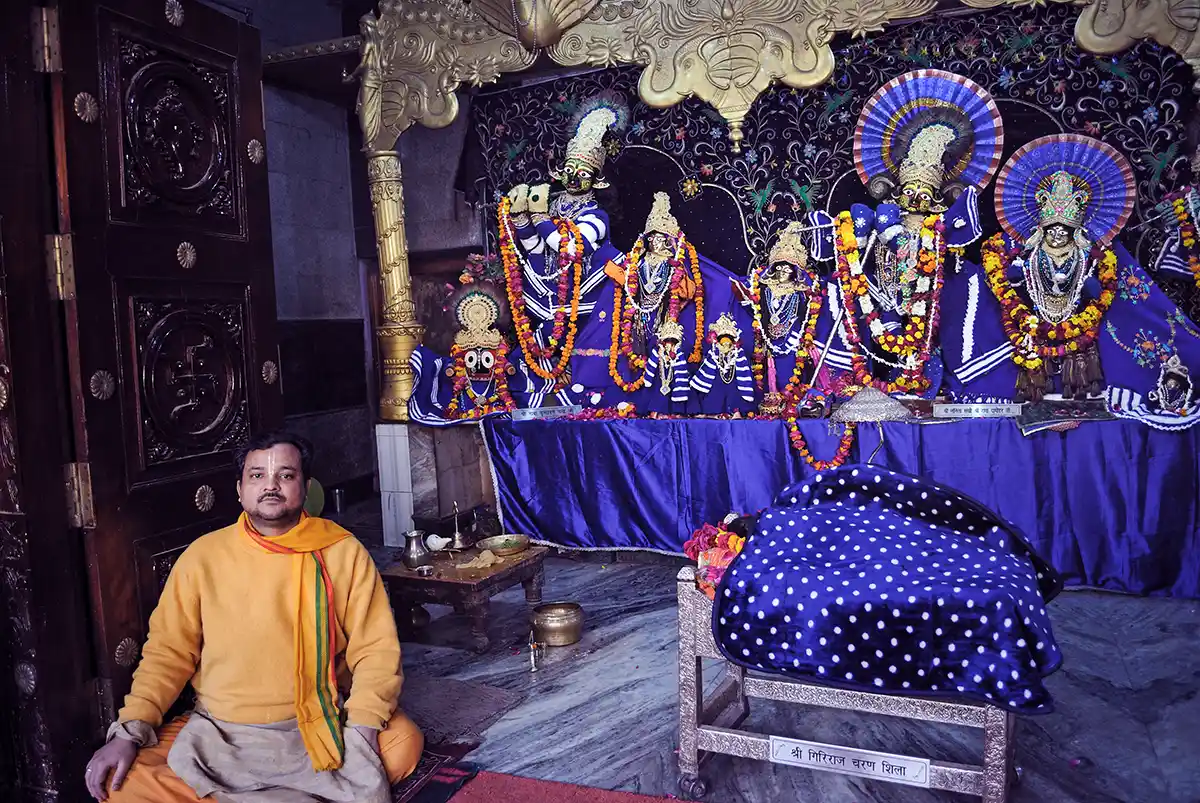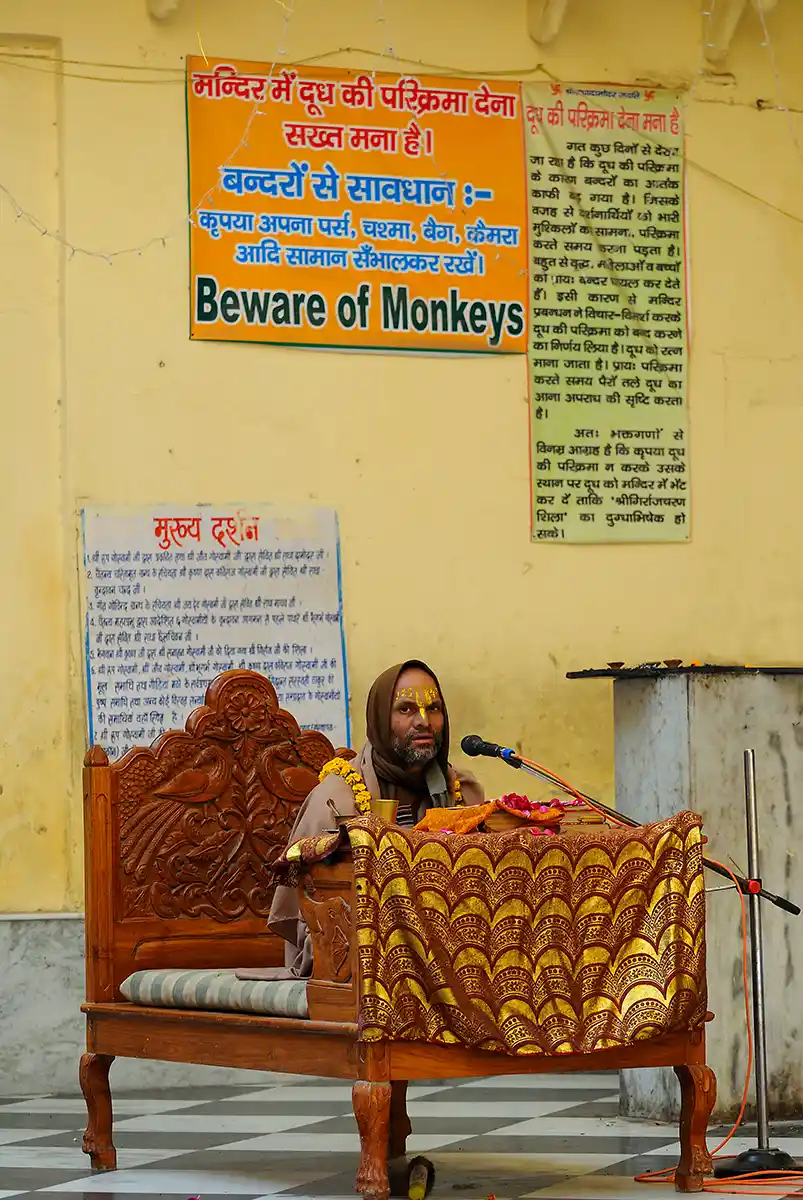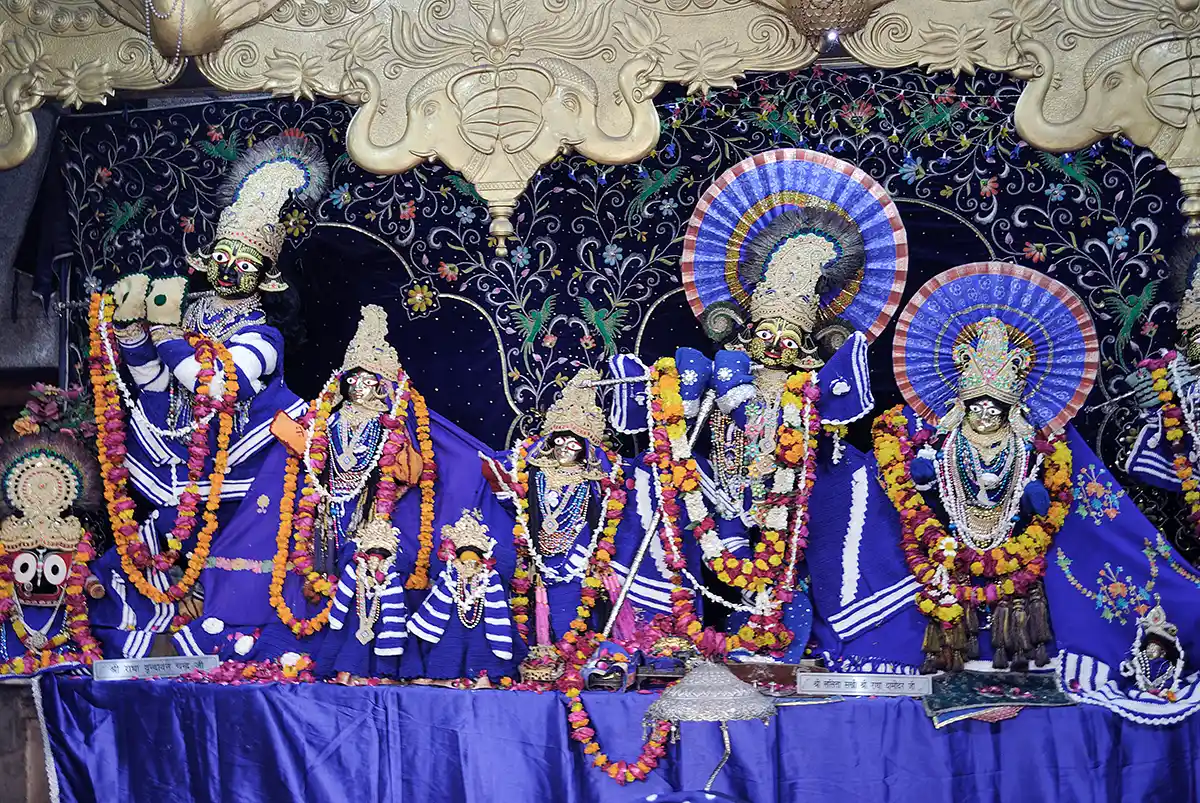Vrindavan
Located on the banks of the Yamuna River in the state of Uttar Pradesh, Vrindavan is the site of an ancient forest where the Hindu deity Krishna spent his childhood days. Approximately 15 kilometers from Mathura, the city of Krishna’s birthplace, the town has hundreds of temples dedicated to worshiping Krishna and his consort, Radha.
Krishna, an incarnation of Lord Vishnu, was born in the long ago era of the Dwapara Yuga as the eighth son of the Yadava prince Vasudev and his wife Devaki. To save him from the murderous intentions of his maternal uncle Kansa, Krishna was taken soon after birth to Gokul, the village of cowherds in Vrindavan. There, he was raised by his foster parents, Nanda Maharaj and Yasoda.
A Hindu scripture, the Bhagavata Purana, describes Krishna's childhood pastimes in the Vrindavan forest, where he, his brother Balarama, and his cowherd friends engaged in youthful pranks. Krishna danced with the local girls known as gopis, hid their clothes while they bathed, spread the message of divine love with his lover Radha, and subdued various demons. These pastimes were the source of inspiration for the famous 13th-century poem, Gita Govinda, by the Sanskrit poet Jayadeva.
It is believed that the spiritual essence of Vrindavan was lost over time until the great saint Chaitanya Mahaprabhu rediscovered it. In 1515, Chaitanya visited Vrindavana and wandered through the sacred forests in the holy places associated with Krishna's divine actions.
Vrindavan is an important Hindu pilgrimage site, especially for the followers of the Vaishnava tradition, which maintains numerous temples and monastic dwellings known as ashrams. Many millions of Krishna and Radha devotees visit these pilgrimage places every year and participate in colorful festivals that relate to the scenes from Krishna's life.
One of the most important temples is the Govinda Deo, built in 1590. Other popular temples include Madan Mohan, Banke Bihari, Radha Vallabh, Jaipur, Jaigurudeo, Sri Radha Raman, Shahji, Rangaji, Govinda Deo, Sri Krishna-Balarama, Radha Damodar, Shri Maa Katyayni, Chintaharan Hanuman, Shree Radha Ras Bihari Ashta Sakhi, Kesi Ghat and Seva Kunj.
Vrindavan is also known as the City for Widows because of the thousands of widows who seek refuge there. By Hindu tradition, widows may not remarry but should devote their remaining years to spiritual liberation. Some widows leave their families after the death of their husbands (or their families leave them) and make their way to the holy city of Vrindavan. In exchange for singing sacred hymns known as bhajans in the temples, these women are given meals and a little money.
For additional information:

Martin Gray is a cultural anthropologist, writer and photographer specializing in the study of pilgrimage traditions and sacred sites around the world. During a 40 year period he has visited more than 2000 pilgrimage places in 160 countries. The World Pilgrimage Guide at sacredsites.com is the most comprehensive source of information on this subject.





